7 Best Tips to Train Alpacas for Beginners
When training alpacas, start by building trust with gentle, calm interactions and be patient as they adjust at their own pace. Use short, consistent sessions with positive reinforcement like treats to keep them engaged. Understand each alpaca’s unique personality and introduce halters slowly. Keep the environment calm and distraction-free, and work with small, comfortable groups to reduce stress. Stick with these basics, and you’ll set the stage for smoother progress as you explore more tailored techniques.
Key Takeaways
- Approach alpacas calmly and gently to build trust and establish a comfortable training environment.
- Use positive reinforcement like treats and praise to encourage desired behaviors and reduce stress.
- Keep training sessions short (5-10 minutes) and consistent to maintain focus and prevent overwhelm.
- Break tasks into small steps, mixing activities to keep training engaging and enjoyable for the alpaca.
- Observe individual alpaca responses and tailor techniques, celebrating small successes to boost confidence.
Prioritize Patience and Trust
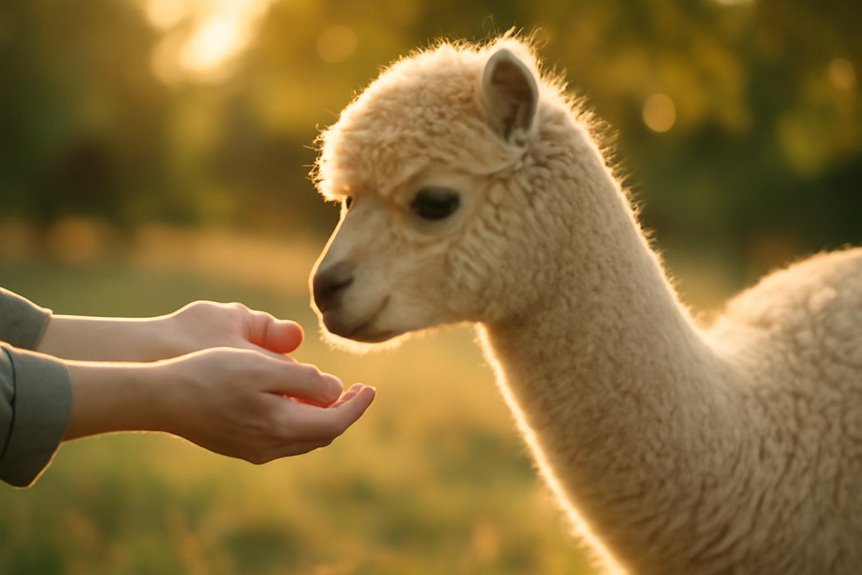
Because alpacas are naturally shy, building trust starts with a calm, gentle approach that lets them come to you on their own terms. You’ll need patience, as forcing interaction only scares them away. They’re sensitive to sudden movements or loud noises, so creating a peaceful environment helps them feel safe. Remember, their fear response can cause them to run if they feel threatened or rushed. By patiently allowing gradual exposure, you give them the chance to adjust at their own pace. Each alpaca is different, so paying attention to their individual comfort levels is key. Consistency and positive experiences strengthen their trust, making future training easier. Patience isn’t just helpful—it’s essential for building a lasting bond with your alpaca.
Start With Small, Manageable Training Sessions
When you start training your alpaca, keep sessions short—around 5 to 10 minutes—to hold their attention without overwhelming them. This manageable training time helps your alpaca stay focused and reduces stress, making learning more enjoyable. As your alpaca becomes more comfortable, you can slowly increase the session length. During training time, mix up activities like halter fitting or gentle desensitization to keep things interesting and engaging. Always choose a calm, familiar environment to minimize distractions and help your alpaca feel safe. By starting small and gradually building up, you set the stage for successful training without pushing your alpaca too hard. Remember, short, consistent sessions will lead to better progress than long, tiring ones.
Use Positive Reinforcement and Rewards
You’ll want to reward your alpaca immediately when it shows the behavior you’re teaching to encourage it to do that again. Keeping training sessions consistent helps your alpaca understand what you expect and builds trust between you. With regular rewards, your alpaca will stay motivated and enjoy learning alongside you.
Reward Desired Behaviors
Although training alpacas can be challenging, rewarding desired behaviors with positive reinforcement makes the process much smoother. During training time, especially halter training, use treats like small pieces of fruits or veggies to reward desired behaviors promptly. Clicker training works well, as the click signals your alpaca that a reward is coming, helping them connect actions to positive outcomes. Be consistent with the rewards you give for specific behaviors so your alpaca clearly understands what’s expected. Mixing up treats and praise keeps training engaging, since alpacas respond differently to rewards. Patience is essential—give your alpaca time to learn and associate their actions with rewards. This builds trust and creates a positive learning environment, making training more effective and enjoyable for both of you.
Consistent Training Sessions
Since alpacas learn best through repetition, holding consistent training sessions every day helps reinforce their behaviors and strengthens your bond. Keep sessions short—about 10 to 15 minutes—to maintain your alpaca’s attention and avoid frustration. Use positive reinforcement like treats or praise during these consistent training sessions to motivate your alpaca to repeat desired behaviors. Incorporating clicker training can improve communication by clearly signaling success, making rewards more effective. Regularly scheduled training not only builds trust but also boosts your alpaca’s confidence and adaptability in different settings. By sticking to consistent training sessions, you guarantee your alpaca feels secure and engaged, making the training process smoother and more enjoyable for both of you.
Understand Individual Alpaca Personalities
When working with alpacas, it’s important to remember that each one has a distinct personality that shapes how they respond to training. To effectively train your alpacas, you need to understand individual alpaca personalities—some may be shy and cautious, while others are outgoing and curious. This affects how quickly they learn and how comfortable they feel during sessions. Keep in mind that alpacas have good memories, so positive experiences build trust, while negative ones can hinder progress. Be patient, as some alpacas may take longer to acclimate to new environments or commands. Tailoring your approach to each alpaca’s temperament will make training smoother and more successful, helping you build a strong bond with every animal in your care.
Keep Training Groups Small and Comfortable
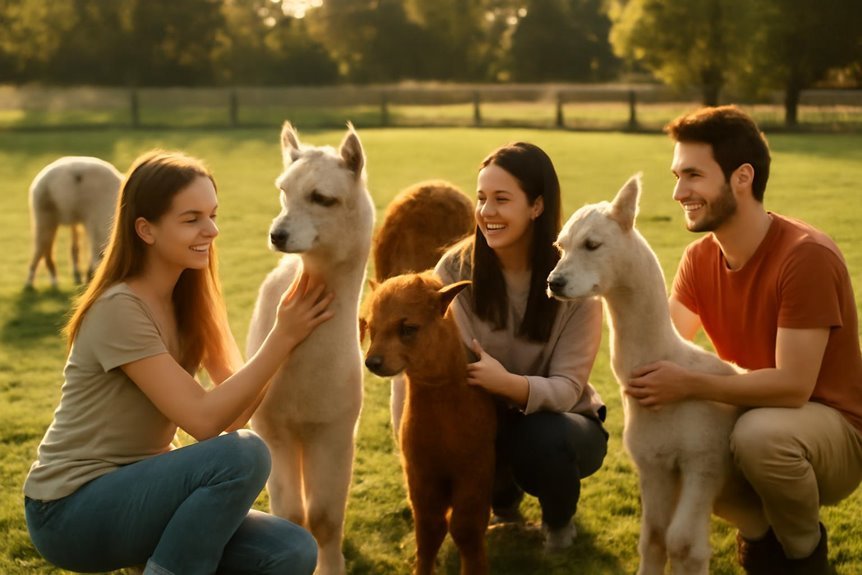
When you keep training groups small, usually between two to six alpacas, it helps them stay calm and comfortable. You’ll notice they respond better when they’re with familiar companions, which builds their confidence. Small groups also let you focus on each alpaca’s unique needs, making your training more effective.
Small Group Dynamics
Keeping your alpaca training groups between two and six animals can make a big difference in comfort and focus. Small group dynamics allow each alpaca to feel secure, reducing stress and encouraging participation. When groups are small, you can better observe individual personalities and learning speeds, adjusting your approach accordingly. Some alpacas are shy and thrive in less intimidating settings, which small groups provide. Plus, staying close to familiar companions boosts their sense of safety, making training more effective. Small group dynamics also strengthen the bond between you and your alpacas, fostering trust and improving the overall experience. By keeping your training sessions intimate, you guarantee each alpaca gets the attention and support they need to succeed.
Companion Comfort Benefits
Since alpacas naturally rely on social bonds, training them in small, familiar groups can significantly ease their stress and boost their confidence. When you keep training groups between 2 to 6 alpacas, you maximize the companion comfort benefits, allowing them to feel secure and relaxed. This comfort helps reduce fear and reluctance, especially given their naturally shy nature. You’ll notice that alpacas learn faster when they’re near familiar peers who provide reassurance. During training time, maintaining this consistent companionship fosters trust between you and the alpacas, enhancing their willingness to participate. By avoiding large, overwhelming groups, you create a calm environment where each alpaca can adapt smoothly to new tasks, making your training sessions more effective and enjoyable for everyone involved.
Introduce Halters Gradually and Gently
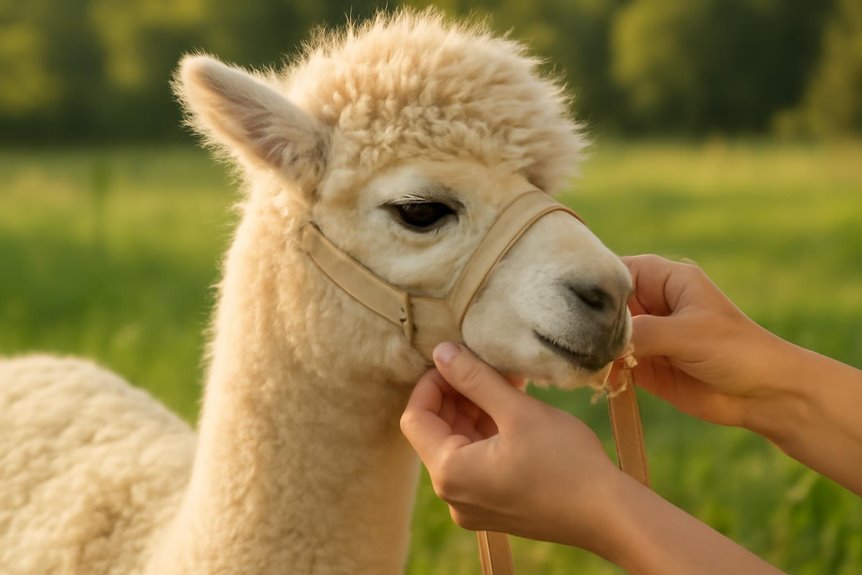
Although halter training might seem challenging at first, starting when your alpaca is 5 to 6 months old can make the process much smoother. When training an alpaca, use halters that fit properly—there should be space for two fingers between the jaw and halter for comfort. Introduce halters gradually by placing one on your alpaca’s head for just five minutes initially. Each day, increase this time by five minutes, rewarding your alpaca with treats to create a positive connection. After each session, remove the halter to reduce stress and let your alpaca graze freely. This gentle, step-by-step approach helps your alpaca accept halters comfortably, making training more effective and less stressful for both of you.
Maintain a Calm and Consistent Training Environment
When you stay calm and consistent during training, your alpaca will feel safer and more confident. To maintain a calm demeanor, conduct sessions in a quiet, familiar space where distractions are minimal. Alpacas are naturally shy and can easily get frightened by chaos, so your steady presence is key. Keep training routines consistent so your alpaca understands what to expect, which builds trust and comfort. Use positive reinforcement like treats or praise to encourage learning without stress. Also, limit sessions to short durations to avoid overwhelming your alpaca. Breaking tasks into manageable chunks guarantees a positive experience that fosters progress. By maintaining this calm and consistent environment, you’ll help your alpaca stay engaged and responsive throughout training.
Frequently Asked Questions
Are Alpacas Easy to Care for For Beginners?
In the grand age of knights, you’d find alpacas surprisingly easy to care for. Their Caring Essentials include companionship, proper diet, clean space, and health checks. You’ll appreciate their friendly nature, making your beginner journey rewarding and manageable.
How Trainable Are Alpacas?
You’ll find alpaca behavior makes them independent and cautious, so they’re not easily trainable like dogs. With patience and gentle, consistent methods, you can build trust and encourage them to learn at their own pace.
What Not to Do Around Alpacas?
Handling mistakes means avoiding abrupt actions and approaching alpacas calmly. Don’t dart directly or disrupt their group; harsh handling and loud noises hurt trust. Stay silent, sensitive, and spot signs of stress swiftly to succeed.
How to Start an Alpaca Farm for Beginners?
To start your alpaca farm, focus on proper farm setup: secure fencing, adequate shelter, and at least 40 square feet per alpaca. Research care, buy a small herd, and guarantee quality feed for healthy, happy animals.

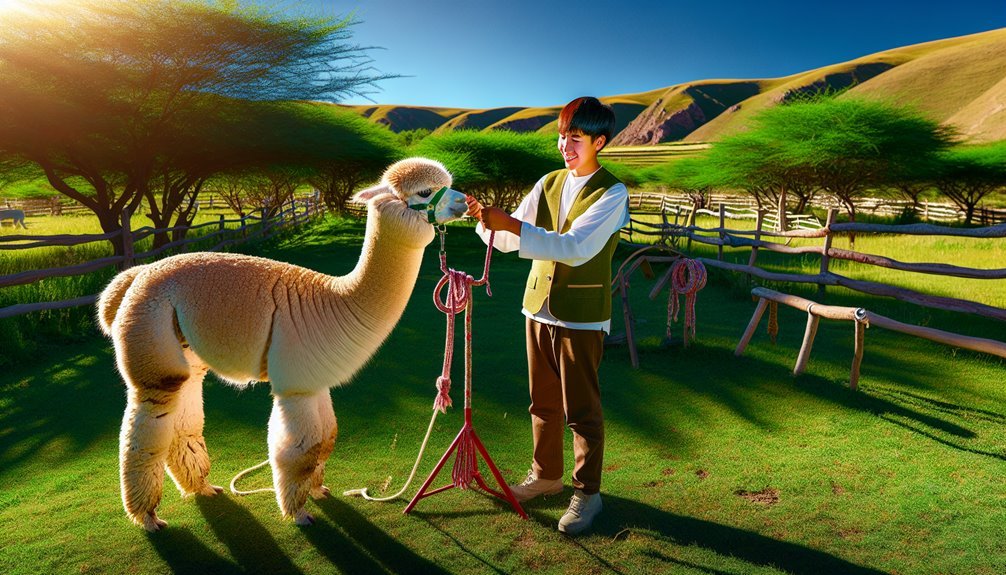

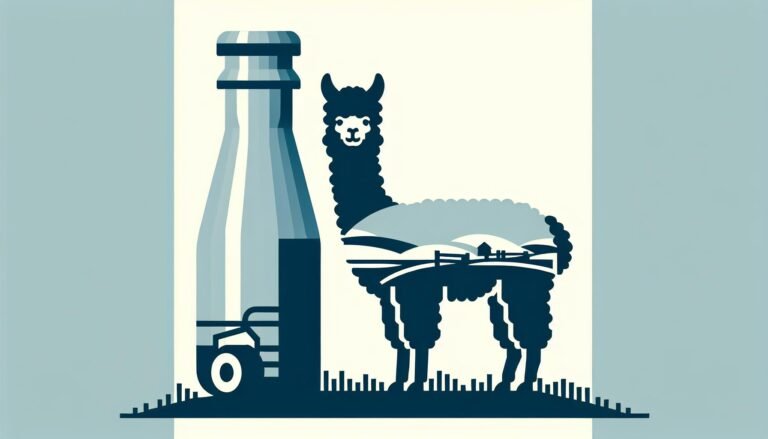
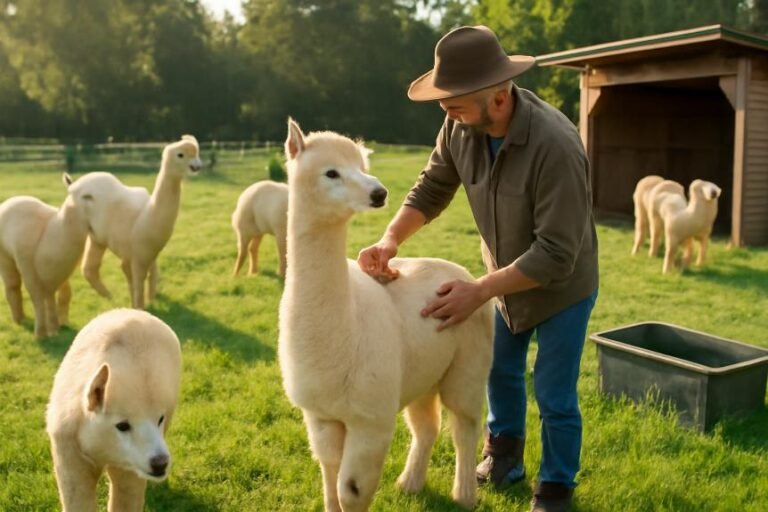

Our picks
Alpaca & Wool Felted Sole Inserts: Comfy Upgrade?
Best Alpaca Socks for Hiking: Ultimate Comfort and Durability on Trails
Best Alpaca Halter for Comfort and Control